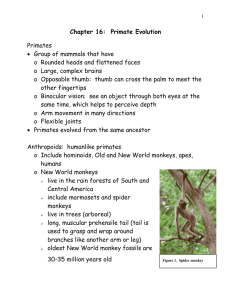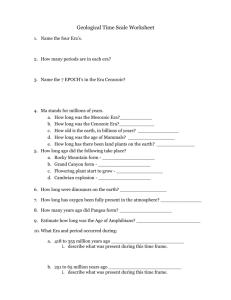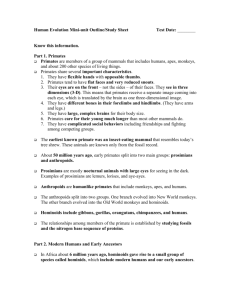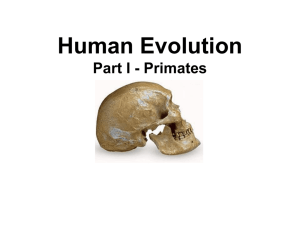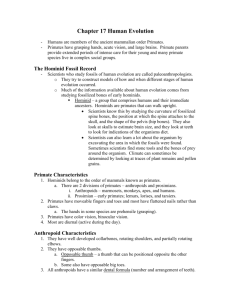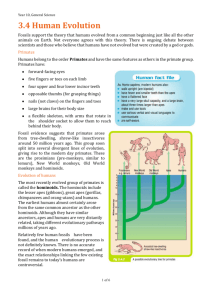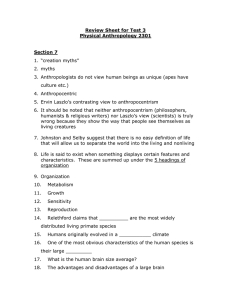Origin of Life & Primate Evolution Study Guide
advertisement
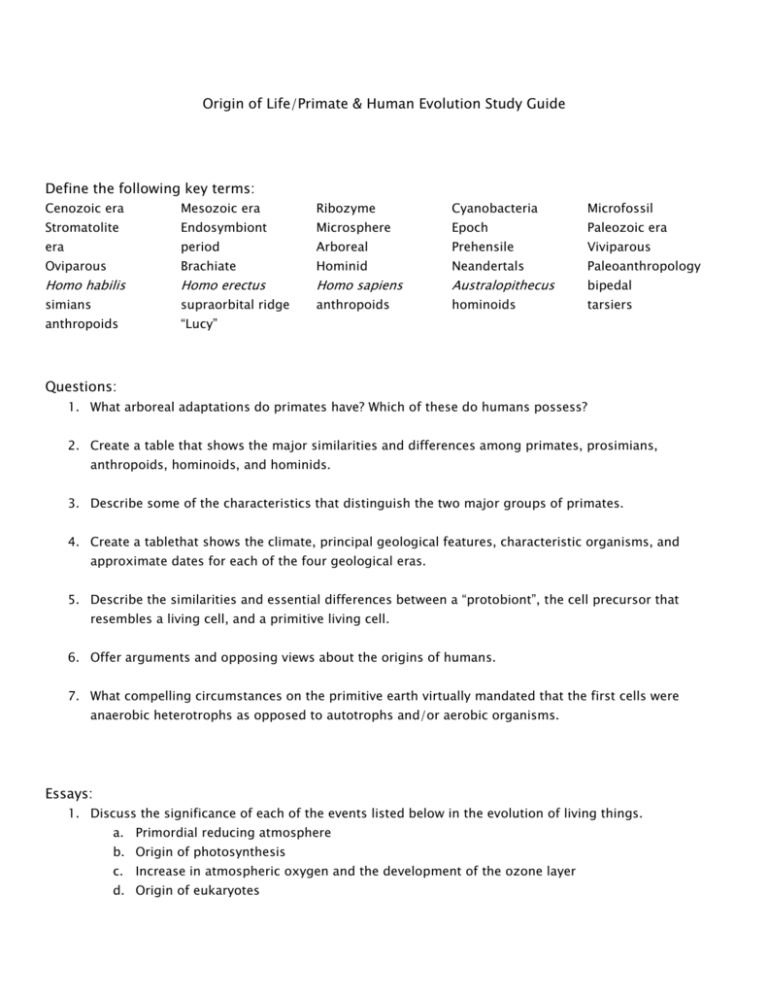
Origin of Life/Primate & Human Evolution Study Guide Define the following key terms: Cenozoic era Mesozoic era Ribozyme Cyanobacteria Microfossil Stromatolite Endosymbiont Microsphere Epoch Paleozoic era era period Arboreal Prehensile Viviparous Oviparous Brachiate Hominid Neandertals Paleoanthropology Homo habilis Homo erectus Homo sapiens Australopithecus bipedal simians supraorbital ridge anthropoids hominoids tarsiers anthropoids “Lucy” Questions: 1. What arboreal adaptations do primates have? Which of these do humans possess? 2. Create a table that shows the major similarities and differences among primates, prosimians, anthropoids, hominoids, and hominids. 3. Describe some of the characteristics that distinguish the two major groups of primates. 4. Create a tablethat shows the climate, principal geological features, characteristic organisms, and approximate dates for each of the four geological eras. 5. Describe the similarities and essential differences between a “protobiont”, the cell precursor that resembles a living cell, and a primitive living cell. 6. Offer arguments and opposing views about the origins of humans. 7. What compelling circumstances on the primitive earth virtually mandated that the first cells were anaerobic heterotrophs as opposed to autotrophs and/or aerobic organisms. Essays: 1. Discuss the significance of each of the events listed below in the evolution of living things. a. Primordial reducing atmosphere b. Origin of photosynthesis c. Increase in atmospheric oxygen and the development of the ozone layer d. Origin of eukaryotes 2. Cite evidence from biochemistry, paleontology, and population genetics that has led biologists to accept the theory of evolution. 3. The theory of organic evolution is based on interpretations of observations from diverse areas. Describe the observations from each of the following areas and explain how they support the theory: a. paleontology b. comparative anatomy or embryology c. biochemistry or genetics 4. Select two of the following three pairs and discuss the evolutionary relationships between the two members of each pair you have chosen. In your discussion include structural adaptations and their functional significance. PAIR A: green algae vascular plants PAIR B: prokaryotes eukaryotes PAIR C: amphibians reptiles
